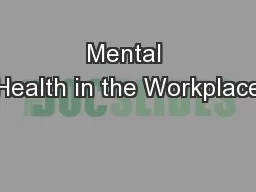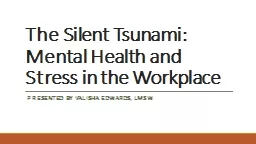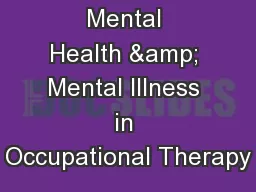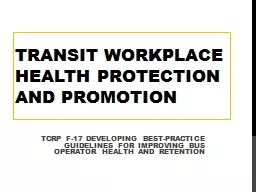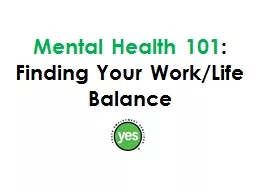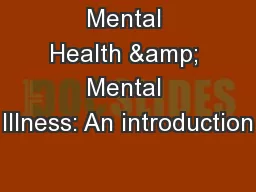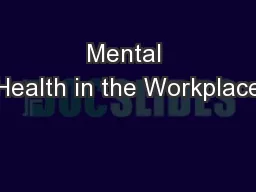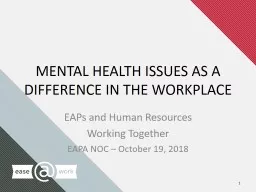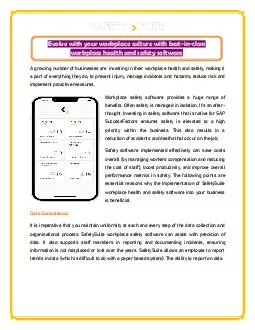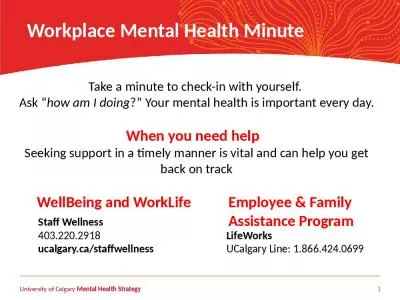PPT-Mental Health in the Workplace
Author : tatiana-dople | Published Date : 2018-01-10
Presenter David Clarke Durham Mental Health Services Agenda Mental Illness impact stigma signs Promoting mental wellbeing in the workplace Defusing strong emotion
Presentation Embed Code
Download Presentation
Download Presentation The PPT/PDF document "Mental Health in the Workplace" is the property of its rightful owner. Permission is granted to download and print the materials on this website for personal, non-commercial use only, and to display it on your personal computer provided you do not modify the materials and that you retain all copyright notices contained in the materials. By downloading content from our website, you accept the terms of this agreement.
Mental Health in the Workplace: Transcript
Download Rules Of Document
"Mental Health in the Workplace"The content belongs to its owner. You may download and print it for personal use, without modification, and keep all copyright notices. By downloading, you agree to these terms.
Related Documents

